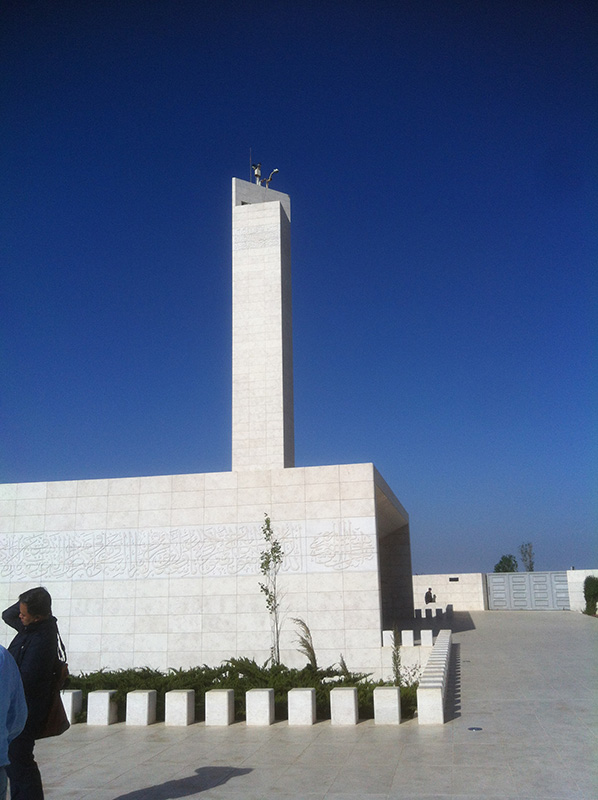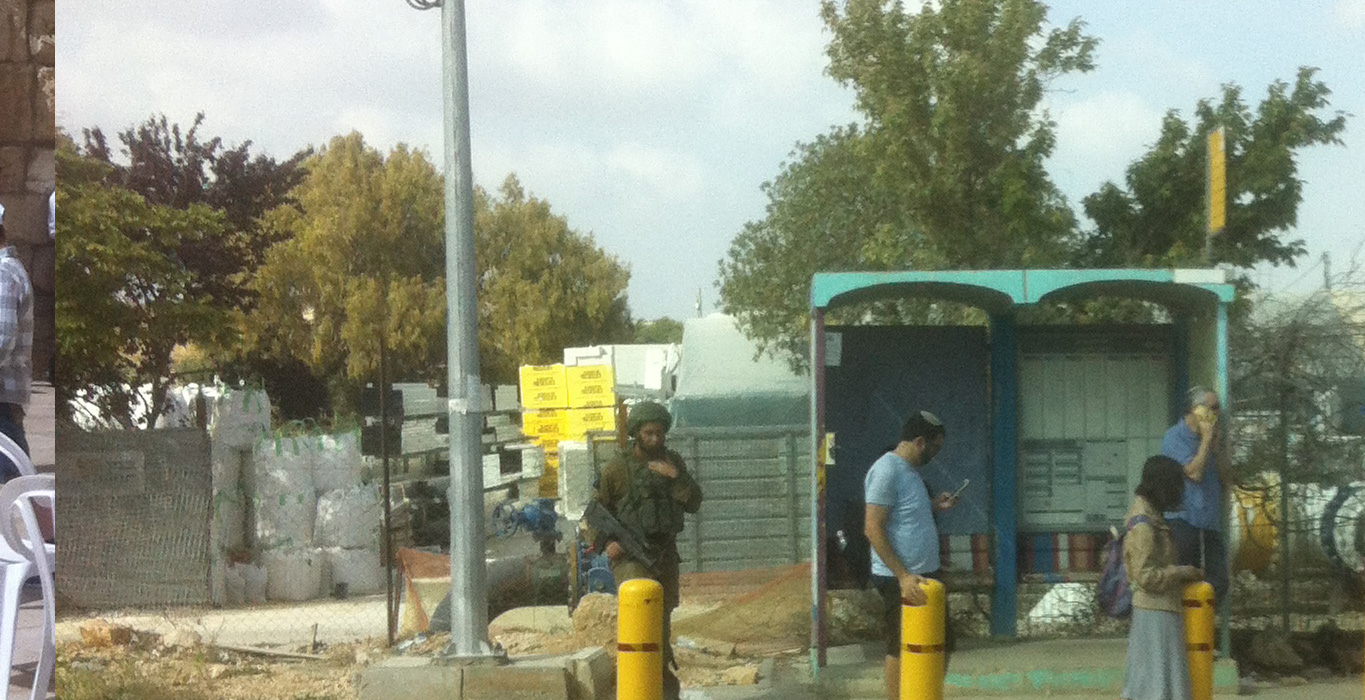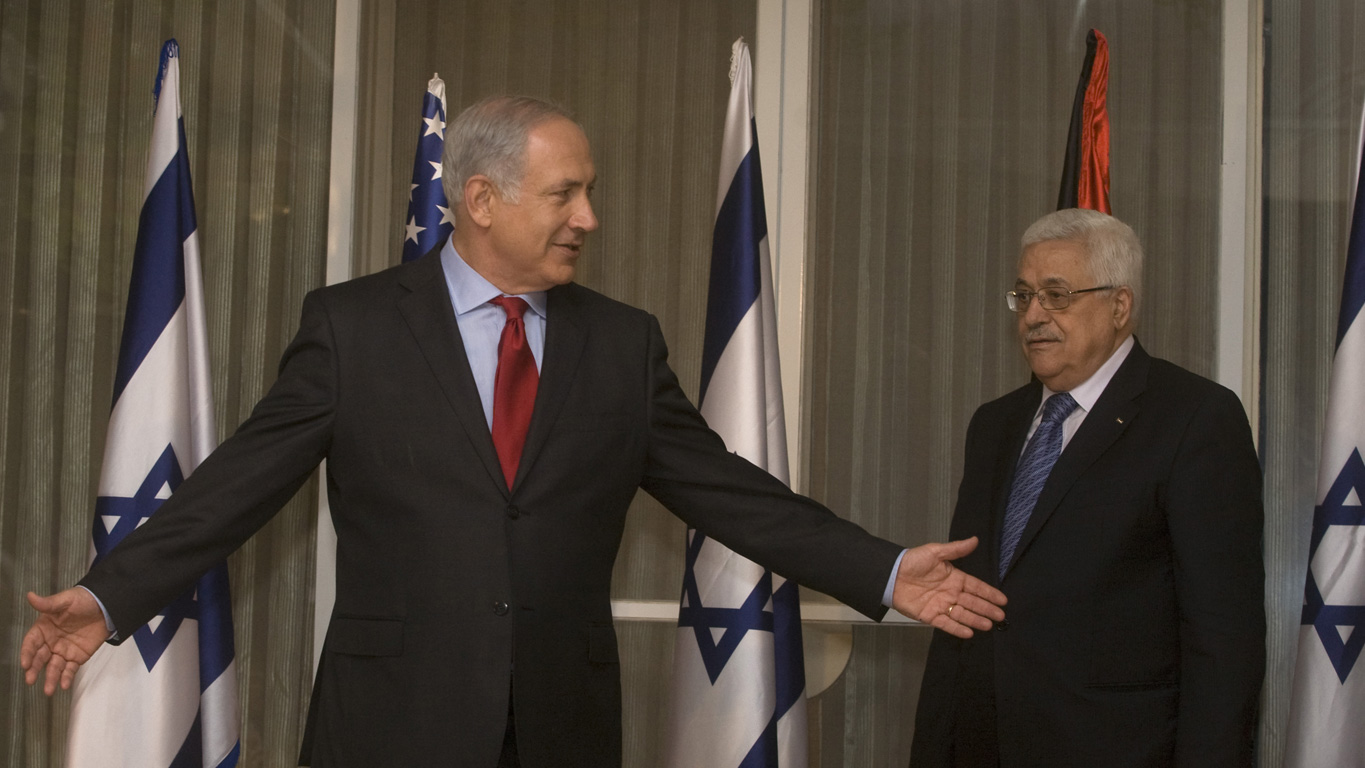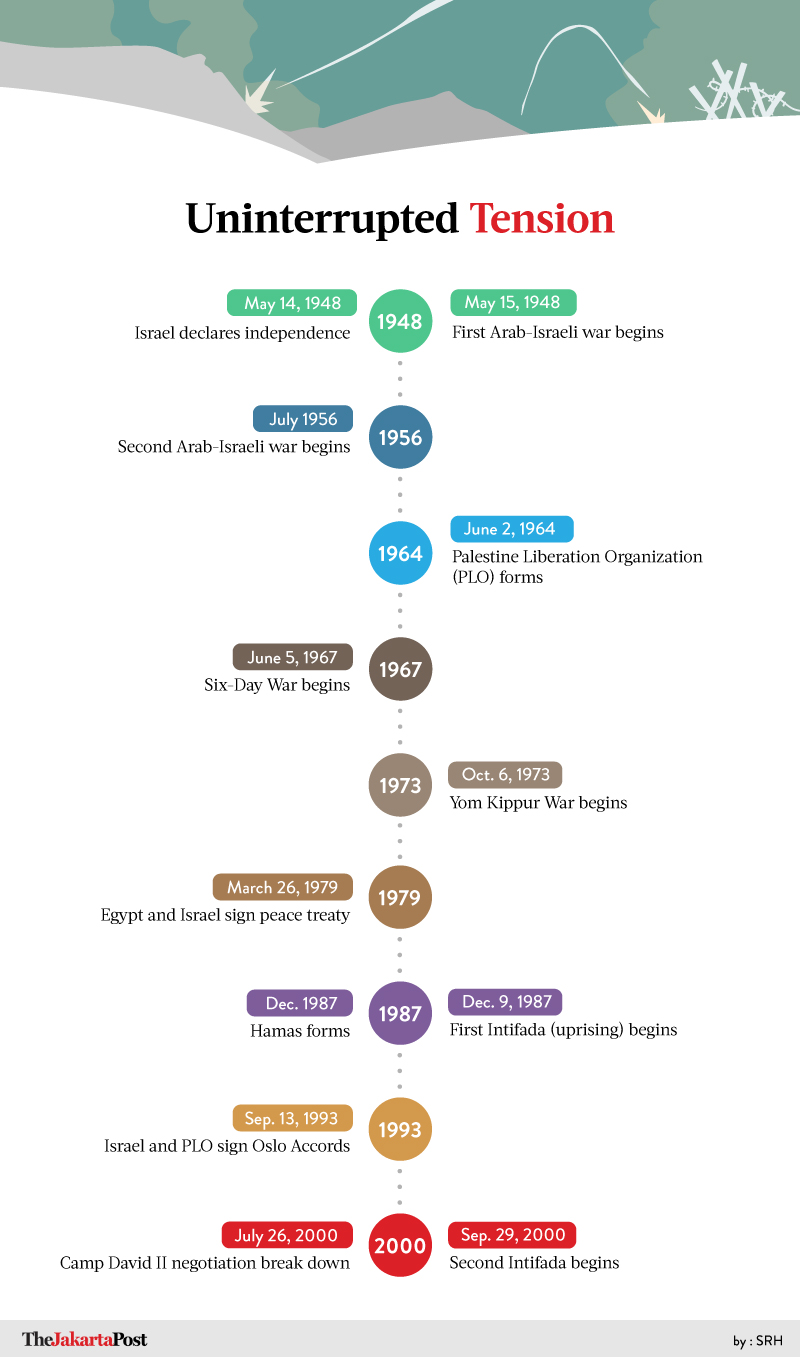On invitation from the Australia/Israel & Jewish Affairs Council (AIJAC), The Jakarta Post's M. Taufiqurrahman visited Israel in May with journalists and members of prominent think tanks from Indonesia, Malaysia and Thailand. He engaged in discussions with policy makers, experts and activists from both Israeli and Palestinian sides of the conflict and visited hot spots in the decades-long conflict. This report looks into challenges in finding permanent solutions to the long-standing problem.
Being a former grassroots activist and an avowed communist, Mustafa Barghouthi did not mince his words when criticizing the Israeli government and a whole host of its policies.
“This looks more and more like an apartheid system,” he said in an interview with a group of Southeast Asian journalists conducted at his office on the third floor of the Palestinian Medical Relief Society headquarters in downtown Ramallah.
Barghouti was referring to the current situation in Israel, where policies from the administration of Prime Minister Benjamin Netanyahu seem as if they were designed and implemented to promote discrimination against Israeli Arabs.
“We have discrimination in the road system. Some roads were reserved for Palestinians and others for Israelis. You can see from this picture that the open highway was for Israeli drivers while next to it there’s that crowded street for Palestinians to drive on,” said the politician who challenged current Palestinian President Mahmoud Abbas in the 2005 presidential election.
“This is basically an apartheid system of the 21st century,” said Barghouthi, who advocates non-violence resistance as the only strategy to challenge the discrimination.
The next morning when we met with Oded Revivi, the mayor of Efrat, a city at the heart of the Judea and Samaria region, and the chief foreign envoy of the YESHA Council, the official umbrella organization representing the Israeli communities in the region, his first comment was delivered to counter what Barghouthi said the day before.
“Whatever Barghouthi told you, I can tell you that it is not true. I can take you to a shopping mall at the intersection and you can see that Arabs and Jews can shop together inside,” Revivi said during a lunch at a local winery on the outskirts of Jerusalem.
Revivi, and many Israelis, have every reason to be suspicious of the other side.
Israeli non-governmental organization Palestinian Media Watch (Palwatch), for instance, has conducted multiple surveys and found that officials from the Palestinian Authority have used public television to broadcast anti-Semitic messages to its audience including by inserting the message in programs designed for children.
Palwatch also found in its survey that in addition to demonizing Jews and Israelis, the Palestinian Authority promoted violence against them, which it presented as legitimate, or even as heroic self-defense. “In fact, with social media, 98 percent of Arab youth have negative views of Jewish people,” Palwatch director Itamar Marcus said.
The media watchdog group also keeps track of how Palestinian media promotes the dehumanization of the Jewish people by regularly publishing cartoons depicting Jews as snakes, rats, pigs or even Satan, symbolizing their roles in carrying out heinous crimes.
And if the Palestinian Authority, which is deemed as being relatively moderate, could launch such a campaign, the presence of a Hamas government in Gaza, which threatens to wipe Israel off the map, only heightens the sense of a siege mentality.
"Hamas has been in charge [of Gaza] for 10 years and we already had three wars. We tried to end the war but they used aid funds from all over the world to buy missiles and build tunnels," said Gerald Steinberg, a political science professor at the Bar Ilan University, in a recent discussion.
Steinberg said that the threats from Hamas only added to the sense of vulnerability, which has engulfed the modern Israeli state since its founding 69 years ago.
"This is on top of the unbelievable level of violence in Syria, the presence of Islamic State [IS] in Sinai and Al-Qaeda on the border [with Egypt]," he said.
For Khaled Abu Toameh, a journalist who writes about Palestinian affairs for The Jerusalem Post, the absence of progress in the negotiation for a two-state solution could be attributed to the lack of trust among Israeli negotiators toward political leadership on the Palestinian side.
"I used to work for a PLO newspaper, so I know the situation on the ground. In 2001, [PLO leader Yasser] Arafat had to reject a generous offer [as part of a peace deal] from Israel. He knew he had a good deal, he just did not know how to sell it to his Palestinian colleagues," Abu Toameh said, referring to an offer made by then prime minister Ehud Barak during the failed Camp David Summit in August 2001, which promised that Palestinians would get a non-contiguous state on parts of the West Bank and the Gaza Strip, deemed by many as the most generous deal ever made by an Israeli leader.
Arafat declined to accept the offer because such a move would be seen as a concession to Israel and thus would be viewed as sacrilegious by many Palestinians. "Defiance, it's a cultural thing. It is better to die than to make a concession for most Palestinians," he said.
Abu Toameh, who started his career as a reporter for the official PLO newspaper, said that, today, no Palestinian leader was brave enough to end the culture of defiance.
Palestinian leadership also suffers from a credibility problem, with no one being able to lead and unite different factions fighting for an independent Palestine.
 Tourists walk away from a mausoleum built for the late leader of the Palestine Liberation Organization (PLO), Yasser Arafat, in downtown Ramalah.(JP/M. Taufiqurrahman)
Tourists walk away from a mausoleum built for the late leader of the Palestine Liberation Organization (PLO), Yasser Arafat, in downtown Ramalah.(JP/M. Taufiqurrahman)
"[President of the Palestinian Authority Mahmoud] Abbas doesn't have the mandate and the Israeli government certainly doesn't want to have a negotiation with parties who don't have the ability to deliver on their promises," Abu Toameh said, referring to Abbas' political mandate as president, which expired in 2009.
"If he decides to return to Gaza, Hamas will no doubt punish him.”
Palestine’s shining new city
on the hill
The Jakarta Post/Ramallah
For those who followed the news about the Arab-Israeli conflict, what comes to mind when hearing the names of places like Ramallah or Nablus is the hellish condition of war-scarred city that subsist on United Nations aid. It does not help that the pictures that come out of another Palestinian-occupied territory like Gaza is an utter destruction.
In reality, driving through Ramallah feels like a trip to a regular city in any other major cities in the world. The city may not look as modern as cities in the Israeli part of the region, but it certainly feels like a well-functioning city with traffic moving out and to the city’s administrative and commercial centers at a leisurely pace. Except for a handful of presidential guards who patrol the tomb of Palestinian Liberation Organization (PLO) leader Yasser Arafat and the adjacent office of Palestinian President Mahmoud Abbas, there was nothing to indicate that the city was one of the flash points in the Middle Eastern conflict. Some on the street apparently takes pride from the opening of the city’s finest dining establishment, opened on the rooftop of narrow boat-shaped building which many said to be owned by one of members of Abbas family.
The oddly-shaped building was one of the products of the construction boom which started in the early 2000. The Palestinian economy grew at an average of 7.7 percent a year between 2007, which had been driven by foreign aid.
The growth of Ramallah has been greatly helped by Israel which decided to remove checkpoints, designed to restrict movements during the second Intifada that erupted in 2000 in the Isreali-occupied territory.
Palestinians who worked in Ramallah but live elsewhere moved in to avoid hassle from Israeli checkpoints, prompting a population explosion in the first decade of 2000.
What once was a village in the outskirt of Jerusalem, Ramallah has seen its populations double during the period and land price surge.
Ramallah's built-up area has grown five fold since the peak of Israeli-Palestinian violence in 2002, and that the price of property continue to rise as demand grows.
And with majority of residential areas in downtown Ramallah already occupied, contractors are now moving out.
One of the most ambitious property development projects is Rawabi, a sprawling residential complex now being constructed on a hilltop nine kilometers north of Ramallah. Funded by a joint venture between the Bayti Real Estate Investment Co., owned by Palestinian American billionaire Bashar Masri, and the Qatari Diar Real Estate Investment Company it has a price tag of US$1.2 billion.
Even by the standard of the Middle East, Rawabi, which means “hills” in Arabic, is extravagant.
Combining the elements from American, Italian and Arabic urban design, Rawabi contains apartment blocks that could accommodate 40,000 Palestinians (One should bear in mind that Ramallah population is only approximately 57,000).
Urban planners hired to design Rawabi make an extra effort to make sure that the city population could have good quality life. Streets are narrow so that people would prefer walking than driving, while also designing the apartment complex to allow for high densities to bring more people to the street and mingle with each other.
Shopping malls, indoor parking, playground, cinemas and fiber-optic telecommunication system were constructed to encourage people to live and work in Rawabi.
The biggest draw of Rawabi is a Roman-style amphitheater with 15,000 seats, the biggest of its kind in the Middle East.
Putting together Rawabi has not been an easy undertaking, given the absence of support from the Palestinian authority, security concerns and resistance from Jewish communities whose settlements bordering on the project.
The biggest problem was water access to the housing complex.
To secure a water deal, the Rawabi developer had to negotiate a deal with the Israeli-Palestinian Joint Water Committee (JWC), which was set up as an implementation of the Oslo Accords. The negotiation, however, was many times hampered by the Palestinian Authority, which boycotted the JWC due to its powerful position.
Buyers of the first batch of Rawabi’s apartment complex got key to their homes in 2014, but they could only move to the new location only in May 2016, shortly before Prime Minister Benjamin Netanyahu addressed the joint session of the United States Congress that he would approve a water agreement with the Palestinian authority.
Then there’s a resistance from the Jewish community who had settled in nearby land controlled by Israel.
Currently, Rawabi developer had to deal with a lawsuit filed by an Israeli non-governmental organization which challenged the legality of access road to the newly-opened city. Rawabi is located in the so-called Areas A and B of the West Bank, which is under the Palestinian civil control, but key infrastructure it uses for the project is in Area C, which is under full Israeli military and civilian control.
Despite the setback, many Palestinians were upbeat about the future prospect for Rawabi, if only to prove that the world was wrong about themselves that Palestinians could succeed on their own economically.
For young Jews, living in Israel
is worth the risk
In other parts of the world, no one would probably want to live in a place like Sderot, a town located a little less than a kilometer from the Gaza border, which has borne the brunt of rocket and artillery attacks from the nearby Palestinian territory.
In the past 10 years, some 13,000 rockets have been fired from Gaza to Israel and the majority have hit Sderot, a city of 24,000 residents. Despite a ceasefire between the Israeli government and Hamas, which controls Gaza, rocket and mortar fire continue to hit Sderot. In May last year, a rocket fired from Gaza exploded in a kindergarten in Sderot, although no casualties were reported.
In recent years, Sderot has been known as the “bomb shelter capital of the world” because of the ubiquity of the reinforced shelters in which civilians in the town could protect themselves from incoming attacks. Bomb shelters could easily be seen dotting the city landscape, set up on some of the city’s strategic stops, including next to every bus stop, which on top of reinforced concrete now has steel posts to deter possible car-ramming attacks.
In the event of a rocket or mortar attack, people in Sderot have 19 seconds between the warning of a rocket launch and its landing to reach a bomb shelter.
Sderot native Dar Cohen knew the drill very well.
In October last year, when a rocket launched by Hamas hit Sderot, Cohen was sleeping and was woken up by his roommates screaming.
“There was a lot of hysteria, as not a lot of us were well adjusted to this. It has happened to me about seven times. I can never get used to it,” Cohen said.
Although the number of casualties and physical damage were notably smaller than those in the Palestinian territory, the war-like situation in Sderot has taken its toll on people like Cohen, who continue to live with post-traumatic stress disorder (PTSD).
 Commuters wait for public transportation at a bus shelter that also doubles as a bomb shelter on the outskirts of Sderot, a city of 23,000 people in southern Israel.(JP/M. Taufiqurrahman)
Commuters wait for public transportation at a bus shelter that also doubles as a bomb shelter on the outskirts of Sderot, a city of 23,000 people in southern Israel.(JP/M. Taufiqurrahman)
However, it turns out that living in Sderot has its perks.
Cohen said that the cost of living is low in Sderot, compared to in other places in Israel because the government has given subsidies to people who moved to the town.
"We get lots of tax benefits, which means that you don’t pay as much tax as someone who lives in Tel Aviv for instance. Buying a house here is cheaper too," Cohen said.
Despite a large number of the civilian population suffering from PTSD, including children, life can be pretty rewarding in Sderot.
"You think that a place like this would be so poor, with a low level of education, and that nothing would happen here. Truth is, every year there’s a film festival here. Every year people from all over Israel come here in order to watch students’ films. A lot of artists, a lot of filmmakers, a lot of people are willing to work," Cohen said in a recent interview, which took place next to a police station where local security authorities kept piles of what was left of rockets and mortars fired by Hamas.
However, inexpensive living and other prosaic reasons to stay in Sderot are only part of the story. Being in Sderot is a patriotic duty for people like Cohen. “My mother is an Arab Jew, who was born in this region before the modern Isreali state was born and since this is the land that had belong to us for 3,000 years, I think being here is part of our obligation as Jews,” he said.
There are countless of other young Jews in Israel who considered their presence in the country as a fulfilment of their destiny.
Sharing a studio apartment on the edge of Jerusalem with her husband Adir Puterman and their newly born son, Danielle Puterman’s life is modest compared to her previous life in Liverpool.
“This is the place where I can fully practice what I believe in. It is also easier for me, for instance, to find foods that are kosher, something that I had difficulty finding back in England,” Puterman said over a Sabbath dinner in early May.
| Producer | : | Ika Krismantari |
| Writer | : | M. Taufiqurrahman |
| Senior Managing Editor | : | Kornelius Purba |
| Managing Editors | : | Primastuti Handayani, Rendi A. Witular, M. Taufiqurrahman, Damar Harsanto |
| Desk Editors | : | Pandaya, Imanuddin Razak |
| Art & Graphic Design Head | : | Budhi Button |
| Photographers | : | M. Taufiqurrahman , AFP |
| Technology | : | Muhamad Zarkasih, Mustopa, Ega Anugrah, Sandy Riady Hasan,
Sarah Naulibasa |



